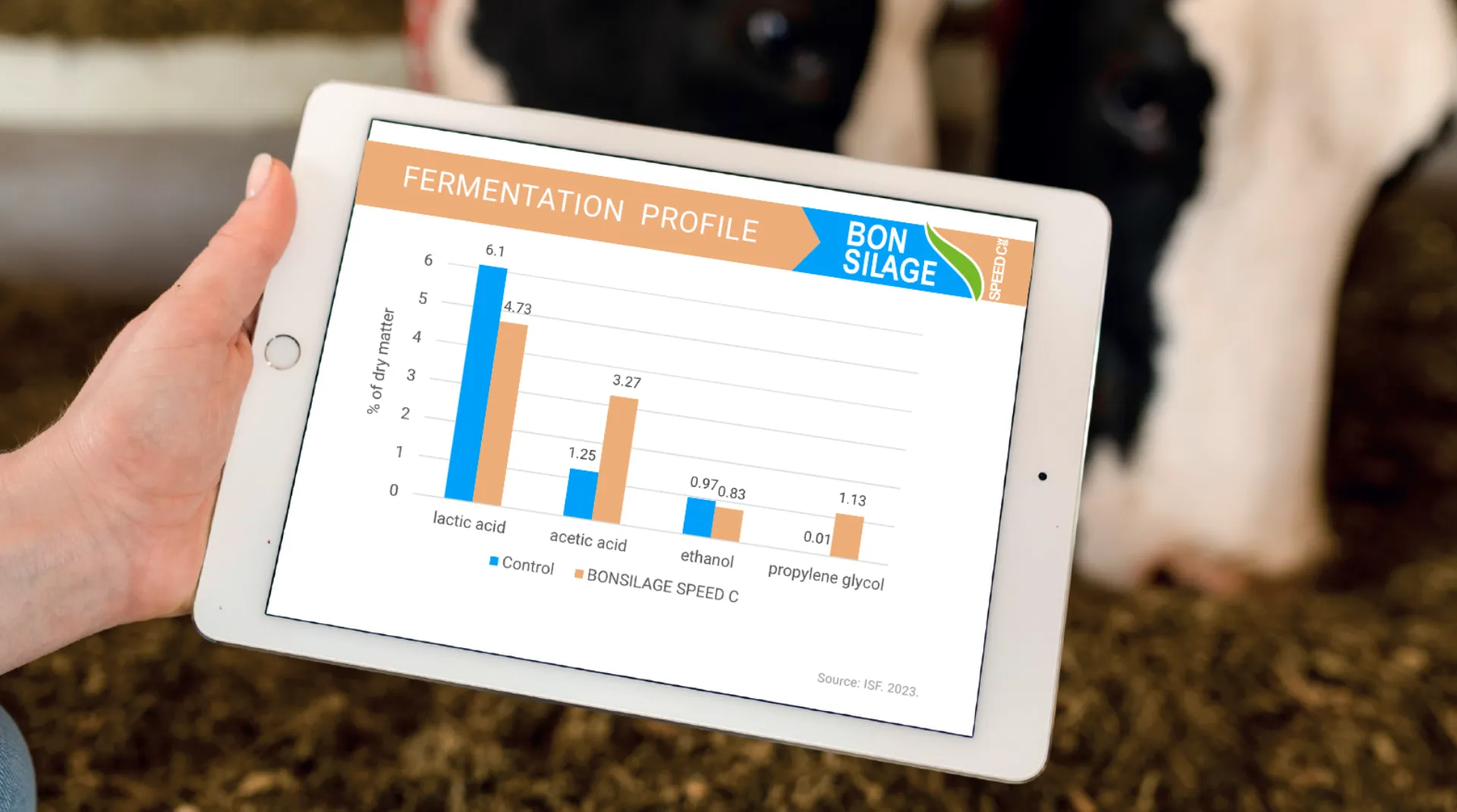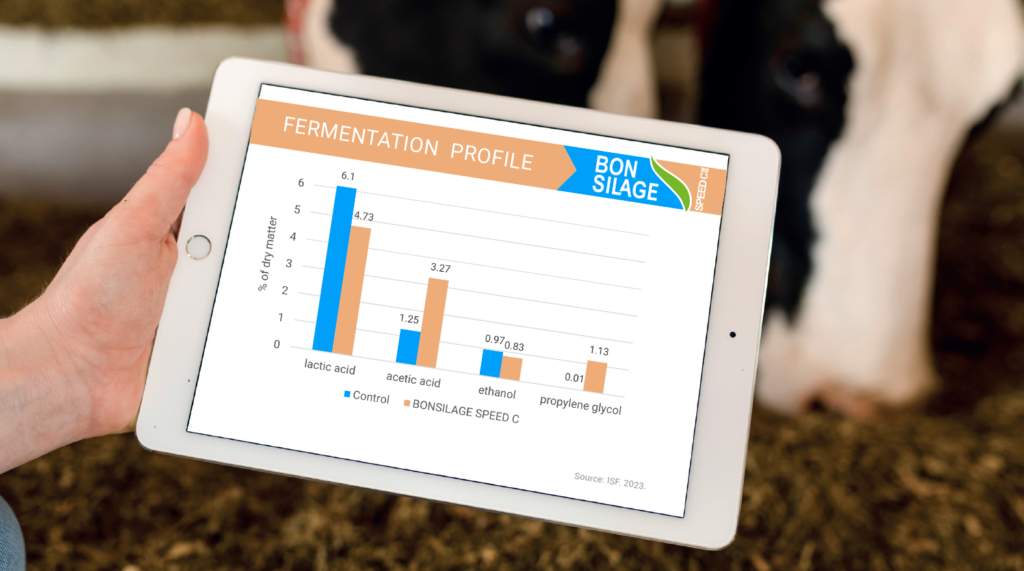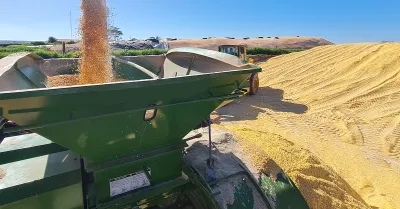Control Every Factor for The Best Silage Results
Every aspect of farming has seemingly infinite variables, and losing control of any of those variables can cause drastically different outcomes. Silage is no different; controlling as many competing factors as you can is the best way to offer the healthiest feed to your herd.

Fermentation and Losses
From harvest to sealing, lactic acid bacteria (LAB), yeasts, enterobacteria and clostridia are the main groups of microbes that compete for substrate. Each group has a different ideal pH and moisture content for growth, meaning controlling these factors helps the desirable group of microbes succeed and drive appropriate silage fermentation.
Although some losses are unavoidable, the fermentation pattern greatly influences losses during fermentation and feedout. Silage losses during fermentation are associated with the carbon dioxide (CO2) produced during fermentation. In contrast, silage losses during feedout are associated with yeast proliferation. These microbes produce CO2 as well, but remarkably, it heats the silage during aerobic metabolism. Improving silage management based on specific flaws is the smartest way to decrease silage losses during the year and understanding this distinction is part of it.
C02 Production and Dry Matter
Dry matter losses during fermentation are associated with CO2 production during fermentation. Lactic acid is a strong acid compared to the other above-mentioned organic acids, and it is responsible for a proper pH decline. The amount of dry matter lost from fermentation depends on the dominant microbial species, the substrates fermented, and the acids end-products. Bacteria that ferment sugars into lactic acid are highly effective in preserving dry matter, ensuring no dry matter loss. However, microorganisms that ferment substrates into acetic, propionic, or butyric acid cause greater losses. The function and importance of acetic acid will be further explored in the next section.
Secondary fermentation from microorganisms other than LAB is responsible for larger losses in the form of CO2. Therefore, fermentation needs to be controlled in order for desirable LAB to be the dominant microbial species. This way, they can produce enough lactic acid to decrease silage pH properly. BONSILAGE products are designed to control the microbial population and drive desirable fermentation.
Oxygen = Spoilage
When silage is exposed to oxygen, undesirable microbes—particularly yeasts—are prone to proliferation, which results in spoilage. These microbes can consume lactic acid and sugars in order to produce CO2 and heat. This increases the pH, leads to silage reheating, and creates opportunities for mold growth. Controlling the proliferation of yeasts at the initial silage fermentation decreases feedout losses. It’s notable that acetic acid has anti-fungi properties that help to control yeast and mold growth during feedout.
Not All Acetic Acid is Equal
Many silage microorganisms, both desirable and undesirable, can produce acetic acid. Enterobacteria species, for example, ferment sugars into a mixture of acids, including acetic acid. Even though this type of bacteria is common in silage, they produce acetic acid and other compounds that do not contribute to proper silage pH reduction.
On the other hand, some LAB can produce acetic acid when silage pH is low enough that undesirable microorganisms are under control. For example, L. buchneri is a well-known species of LAB that can ferment lactic acid into acetic acid. While enterobacteria are active at pH 5.0, L. buchneri is more active at pH 4.0, thus, acetic acid production in this case does not impair silage preservation and helps to control yeast proliferation at feedout. BONSILAGE inoculants like ALFA, PRO, CORN+ and SPEED C contain bacteria strains that can rapidly decrease silage pH and produce acetic acid properly and in a controlled way.
The point here is that acetic acid concentrations listed in laboratory analyses can be misleading as the report does not tell us the whole story. Why? Was the acetic acid concentration observed in the sample produced by desirable microorganism after silage pH is low? Or by undesirable microorganisms?
As with everything else related to silage, controlling the factors around acetic acid production can help control desirable outcomes. BONSILAGE can help.
If you like to download the information, click HERE.



